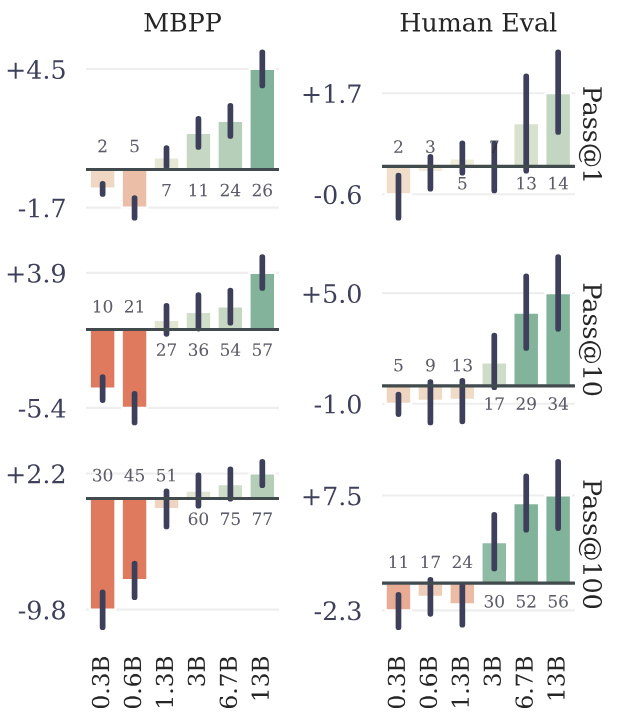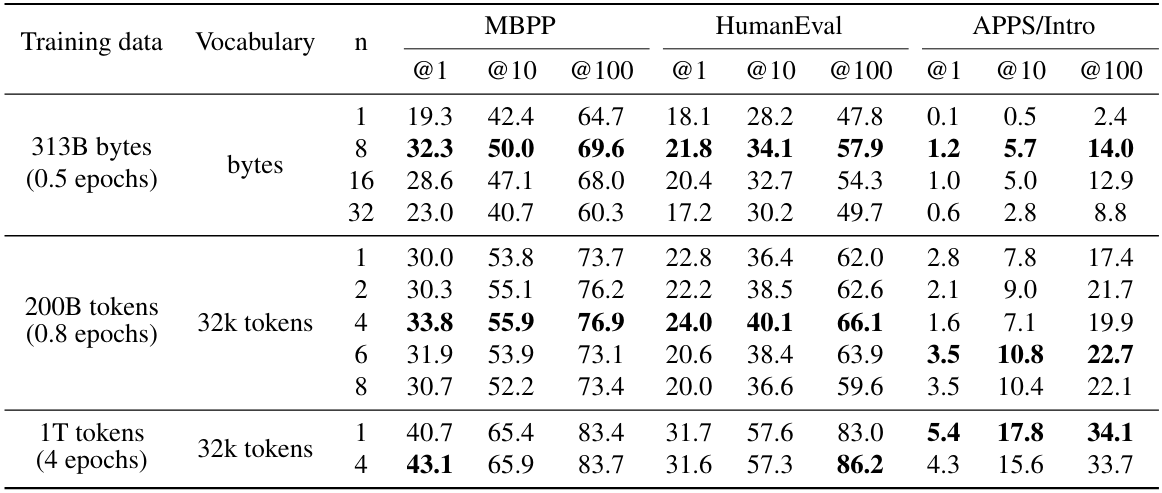Table of Links
3.1. Benefits scale with model size and 3.2. Faster inference
3.3. Learning global patterns with multi-byte prediction and 3.4. Searching for the optimal n
3.5. Training for multiple epochs and 3.6. Finetuning multi-token predictors
3.7. Multi-token prediction on natural language
4. Ablations on synthetic data and 4.1. Induction capability
5. Why does it work? Some speculation and 5.1. Lookahead reinforces choice points
5.2. Information-theoretic argument
7. Conclusion, Impact statement, Environmental impact, Acknowledgements, and References
A. Additional results on self-speculative decoding
E. Additional results on model scaling behavior
F. Details on CodeContests finetuning
G. Additional results on natural language benchmarks
H. Additional results on abstractive text summarization
I. Additional results on mathematical reasoning in natural language
J. Additional results on induction learning
K. Additional results on algorithmic reasoning
L. Additional intuitions on multi-token prediction
3.1. Benefits scale with model size
To study this phenomenon, we train models of six sizes in the range 300M to 13B parameters from scratch on at least 91B tokens of code. The evaluation results in Figure 3 for MBPP (Austin et al., 2021) and HumanEval (Chen et al., 2021) show that it is possible, with the exact same computational budget, to squeeze much more performance out of large language models given a fixed dataset using multi-token prediction.

We believe this usefulness only at scale to be a likely reason why multi-token prediction has so far been largely overlooked as a promising training loss for large language model training.
3.2. Faster inference
We implement greedy self-speculative decoding (Stern et al., 2018) with heterogeneous batch sizes using xFormers (Lefaudeux et al., 2022) and measure decoding speeds of our best 4-token prediction model with 7B parameters on completing prompts taken from a test dataset of code and natural language (Table S2) not seen during training. We observe a speedup of 3.0× on code with an average of 2.5 accepted tokens out of 3 suggestions on code, and of 2.7× on text. On an 8-byte prediction model, the inference speedup is 6.4× (Table S3). Pretraining with multi-token prediction allows the additional heads to be much more accurate than a simple finetuning of a next-token prediction model, thus allowing our models to unlock self-speculative decoding’s full potential.

This paper is available on arxiv under CC BY 4.0 DEED license.
Authors:
(1) Fabian Gloeckle, FAIR at Meta, CERMICS Ecole des Ponts ParisTech, and contributed equally;
(2) Badr Youbi IdrissiFAIR at Meta, LISN Université Paris-Saclay, and contributed equally;
(3) Baptiste Rozière, FAIR at Meta;
(4) David Lopez-Paz, FAIR at Meta and his the last author;
(5) Gabriel Synnaeve, FAIR at Meta and the last author.

